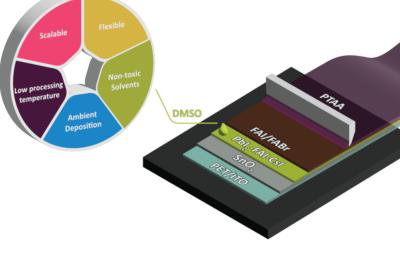Researchers show clay substance can improve the efficiency and stability of perovskite solar cells
Scientists from Turkey's Konya Technical University have shown that sepiolite, a naturally occurring clay substance, can be added to perovskite precursor materials, and form a scaffold layer that can improve the efficiency and stability of solar cells. The scientists believe that this substance could be valuable in developing reproducible processes for the production of large-area perovskite solar cells.
SEM image of aerosol coated sepiolite films on FTO glasses obtained from 1 mg/ml dispersion in water. (a) 30KX and (b) 50KX magnification. Image from study
The team found that sepiolite, a naturally occurring clay mineral largely composed of silicon, magnesium and oxygen, has a very high active surface area and can easily be dispersed in solvents. It can be used without any alterations as a scaffold layer in a perovskite solar cell. The group worked with planar perovskite solar cells with an initial maximum efficiency of 7.92%, and found that cells fabricated with the sepiolite additive jumped to a maximum efficiency just over 16%, more than a 50% increase for cells produced under otherwise identical conditions.






